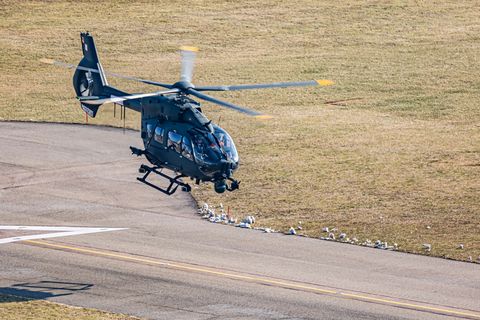Civil and military helicopters continue to prove their worth to German defence and security forces
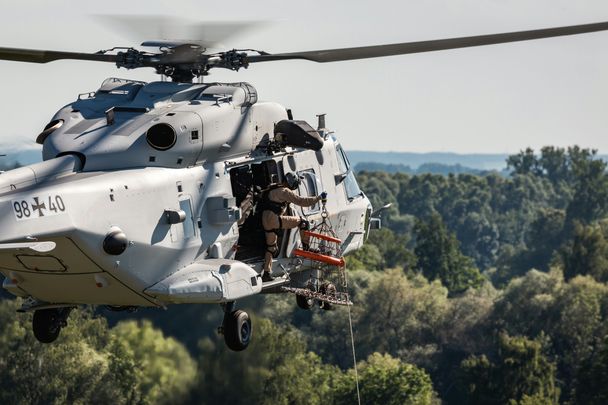
When lives are at risk, whether as a result of a natural disaster or a serious accident, helicopters can be a vital rescue asset - they are fast, agile and can get in close proximity to the scene. And in a year marked by a number of critical events, helicopter operations in support of urgent public service missions proved to be invaluable to German defence and security forces.
A firefighting asset
When extinguishing fires, helicopters have the ability to drop large quantities of water quickly and accurately - and are able to do so without having crew members approach the flames. In June 2023, the forest on a former military training area in the district of Teltow-Fläming in the south of Berlin burned for days. The former military site is heavily riddled with ammunition, and detonations occurred repeatedly due to the heat. The fire brigade watered the parts of the forest that were not yet burning in order to prevent the fire from spreading to the neighbouring villages. Movement on the ground was only possible to a very limited extent due to the risk of explosion. The state of Brandenburg therefore called for assistance from the air. NH90 TTH helicopters from the German Armed Forces and Super Puma aircraft from the German Federal Police came to the rescue. In one day, the Super Puma of the German Federal Police dropped a total of 144,000 litres of extinguishing water on 80 locations.
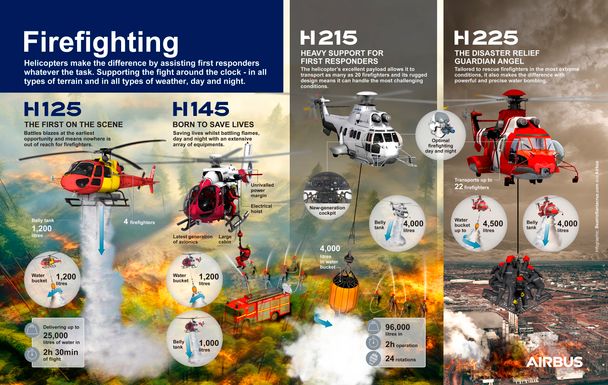
Supporting disaster relief efforts
In August 2023, the German Air Force's CH-53 heavy-lift transport helicopter flew packed food and drinks, power generators, chainsaws and shovels and even an excavator including the transport vehicle as an external load with a total weight of approximately 3.5 tonnes to the regions of Slovenia affected by a flood disaster. The CH-53 is the oldest helicopter in the German Armed Forces and is maintained by Airbus Helicopters in Donauwörth. Thanks to its good availability, it is used both in disasters and on international missions such as in Mali and Afghanistan.
A lifeline for mountain-based operators
Another advantage of employing helicopters during high-risk operations is their ability to land in confined areas or hover above the scene to retrieve civilians. This can be crucial for missions in high altitudes, where little relief can be provided by land-based vehicles. In May 2023, a paraglider paralysed the Hochfelln cable car in Chiemgau because it flew into the cable car's wire rope, became entangled in it and prevented two gondolas from continuing their journey. As there were still more than 50 mountain hikers on the summit and it was foreseeable that the cable car would be out of service for a long period of time, the Bavarian Mountain Rescue decided to use helicopters to remove the people from the mountain.
An H135 rescue helicopter from Traunstein, an H145 LUH SAR from the German Armed Forces in Niederstetten, an EC 135 helicopter from the Bavarian police helicopter squadron and an EC 155 from the federal police were deployed. Together with the tourists in the gondolas, who were picked up at the middle station, the deployed crews evacuated more than 70 people with their helicopters, some of them well into the night.
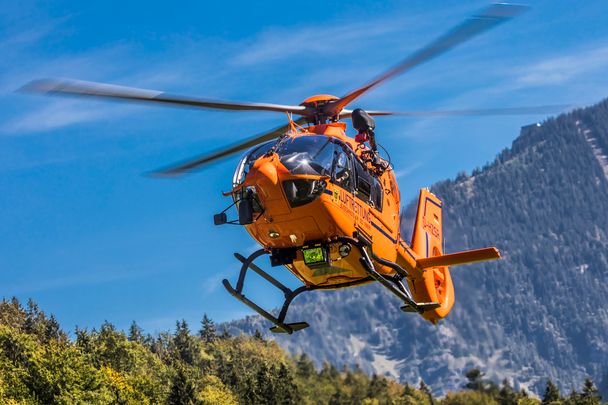
A naval watchdog
Airbus helicopters also supported the rescue operation when the two freighters "Polesie" and "Verity" collided off Heligoland in October. The new NH90 Sea Lion naval helicopter has been providing search and rescue services at sea for the German Navy on the North Sea and Baltic coasts since July 2023. The mission off Heligoland was the first major test for the new type. A total of three NH90 Sea Lion helicopters were deployed for around 18 flight hours. The first helicopter was on site early in the morning, the crew was able to find one of the shipwrecked people with the help of night vision goggles, winch him on board and treat him. The rescue came literally at the last minute; the man would not have survived any longer in the water.

"A special skill that sets the naval aviators apart from most civilian rescue aircraft is their ability to operate at night and in extremely bad weather," says the naval aviators' commander, Captain Broder Nielsen. The weather had improved slightly during the day, but deteriorated again in the evening with high waves and rain. "The helicopters are equipped with high-resolution cameras and other sensors that can be used to systematically search the surface of the water for missing persons," explains the naval aviation commander. For this purpose, the Sea Lion has a sea surveillance radar that covers 360 degrees, as well as a combined video and infrared sensor under the front fuselage.
In addition to the Sea Lion helicopters, two Sea King Mk41 aircraft were also deployed. This type will be decommissioned in August 2024 after fifty years of service. Pilots who have already switched from the Sea King to the Sea Lion report that the acute rescue mission has proven the improvement in performance, in addition to the more modern sensors, that the new naval multi-purpose helicopter has brought with it. "The performance is significantly better compared to the Sea King," says one of the rescuers. "For example, we were able to get to the scene faster and the improved autopilot is a great help, especially in bad weather."
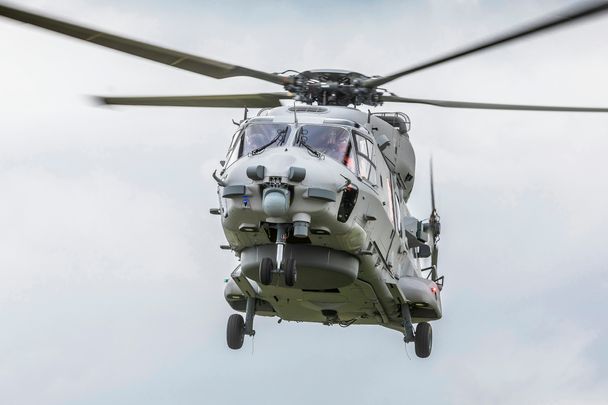
Learn more about Airbus helicopters' impressive scope of missions at the 2024 edition of ILA in Berlin, Germany.

